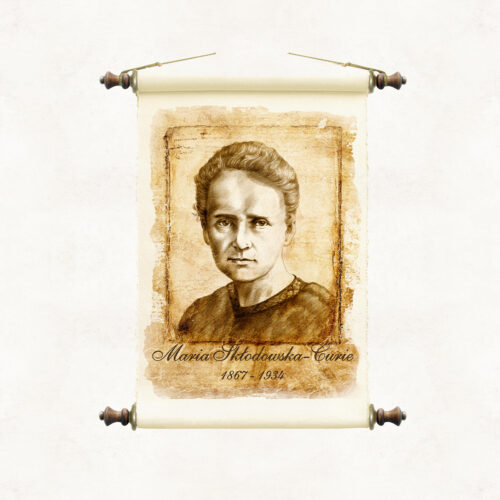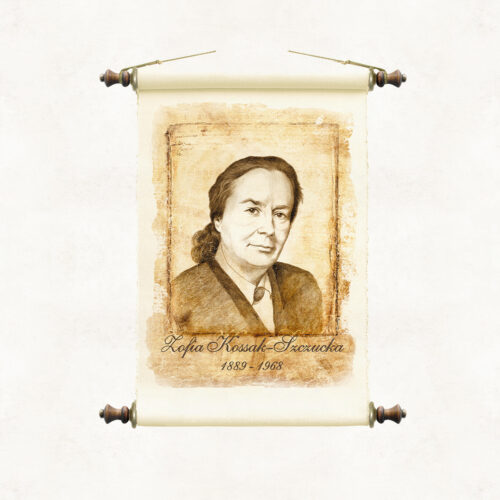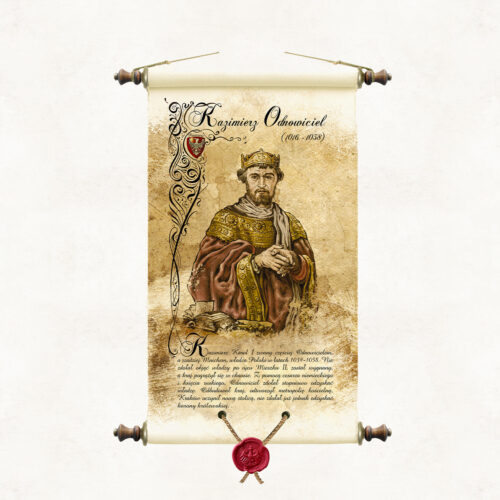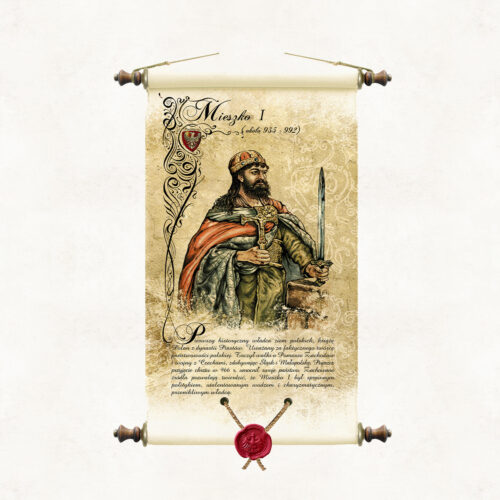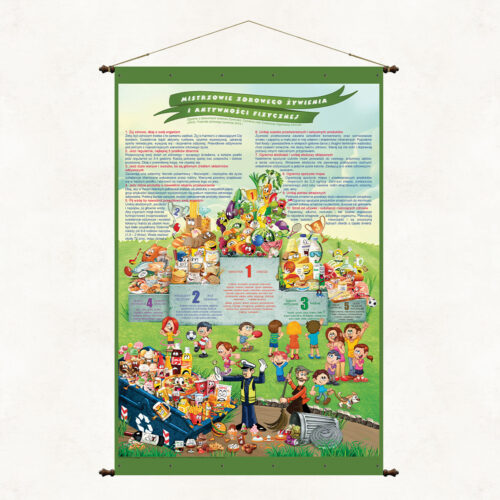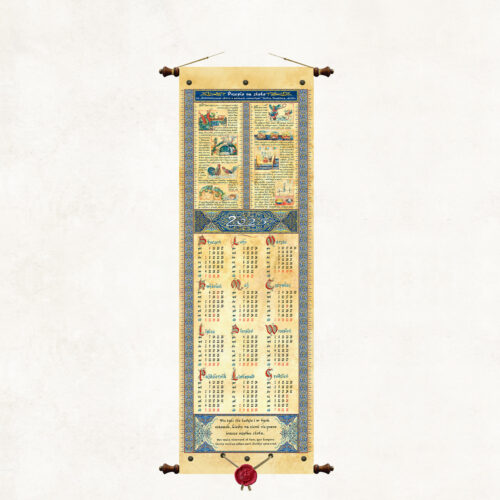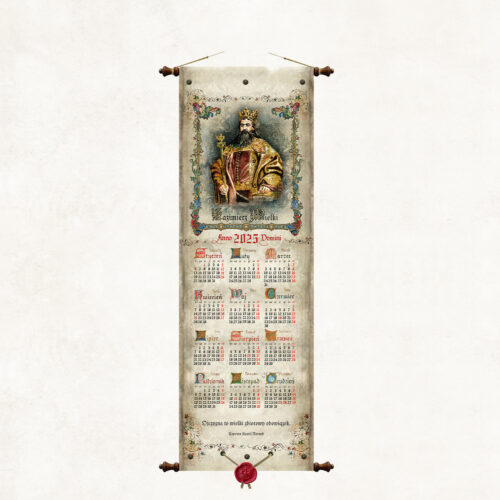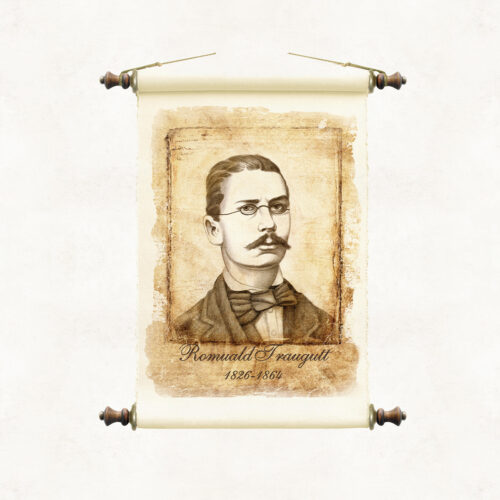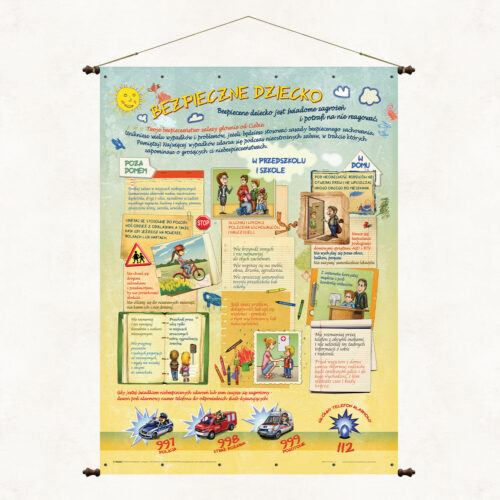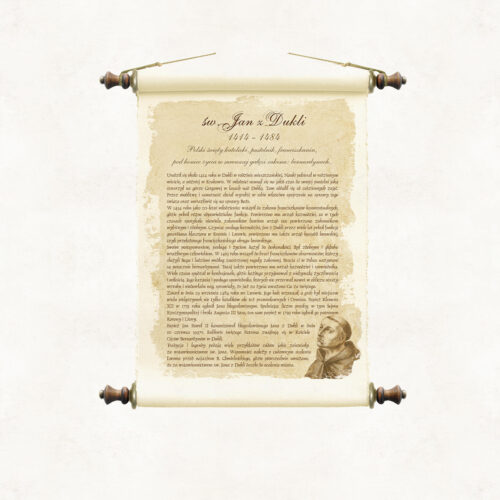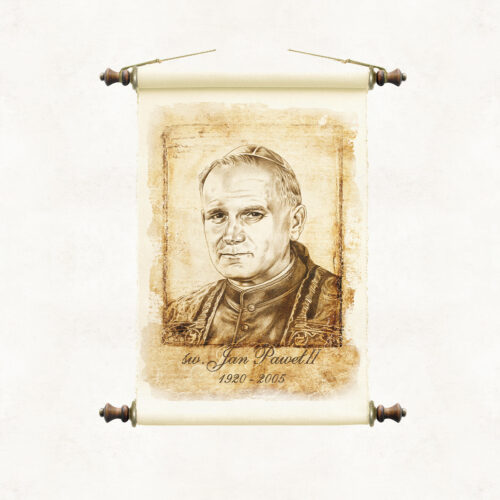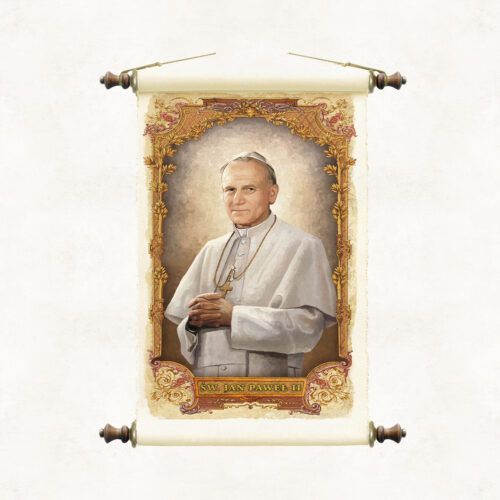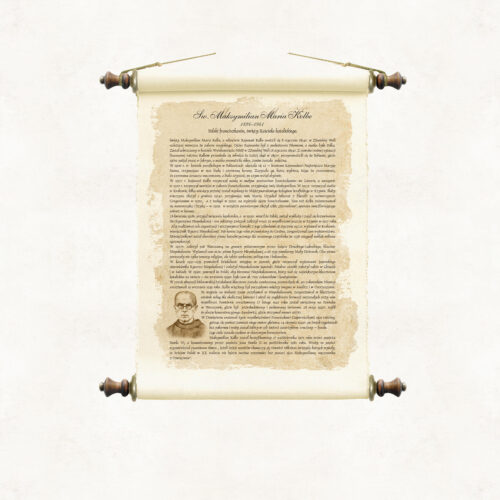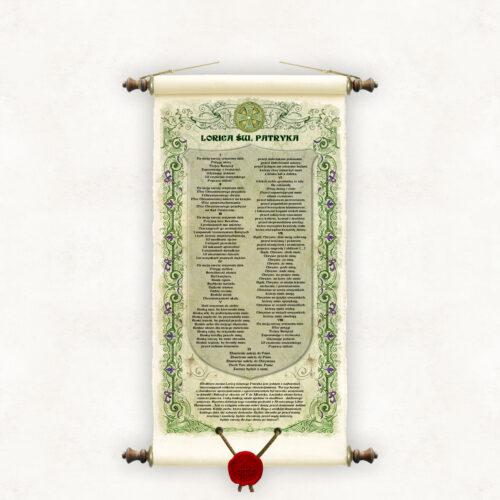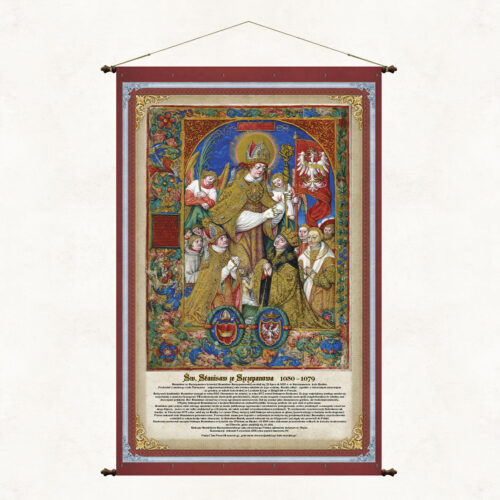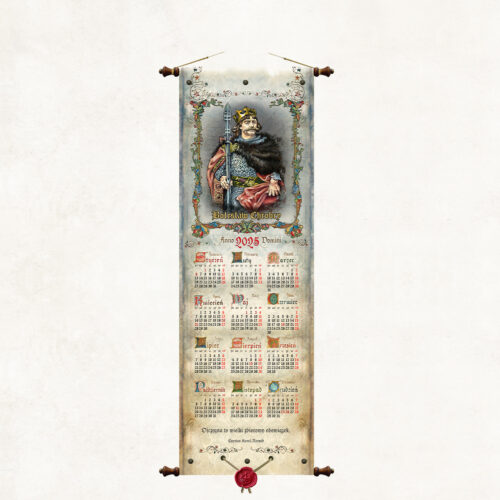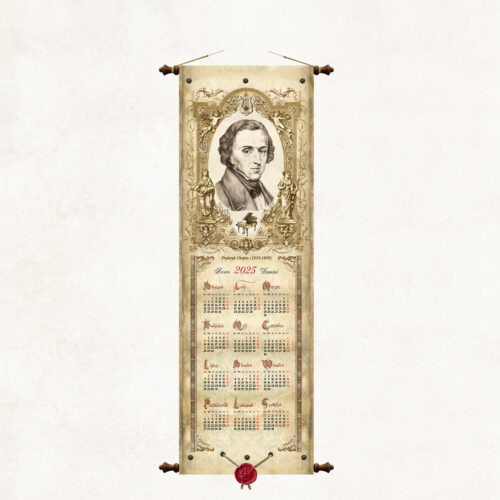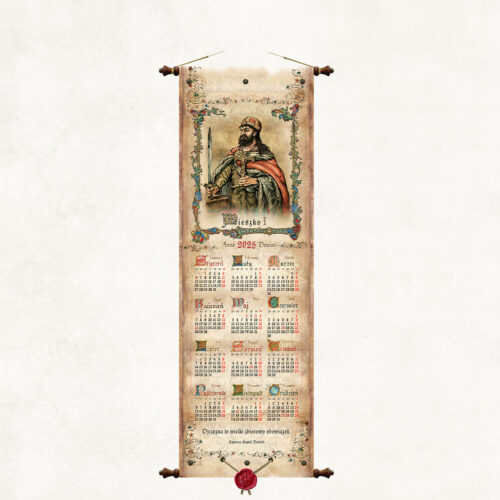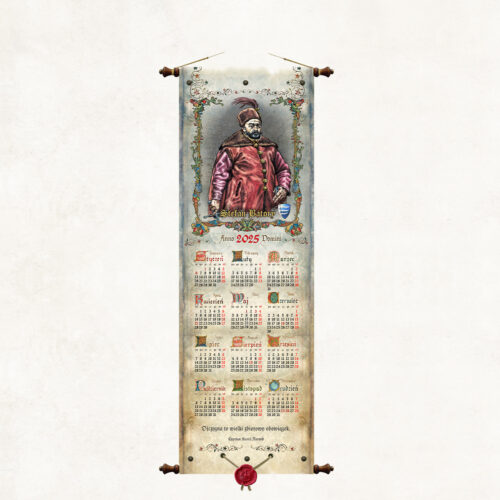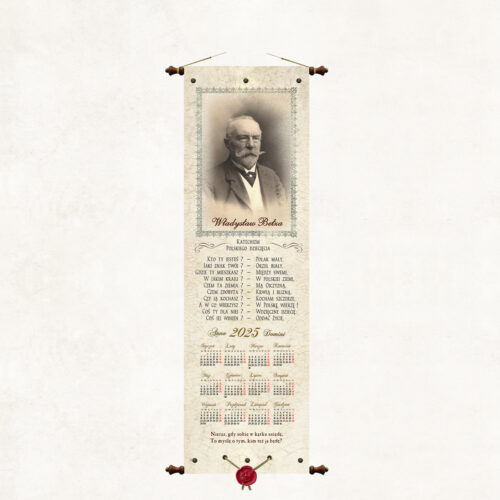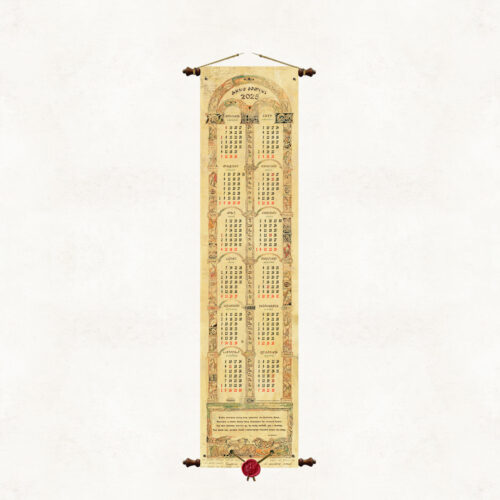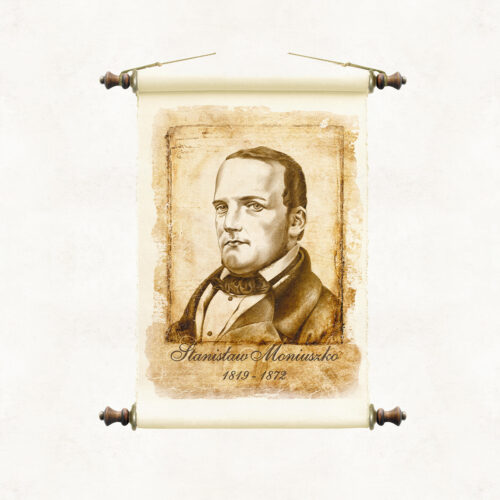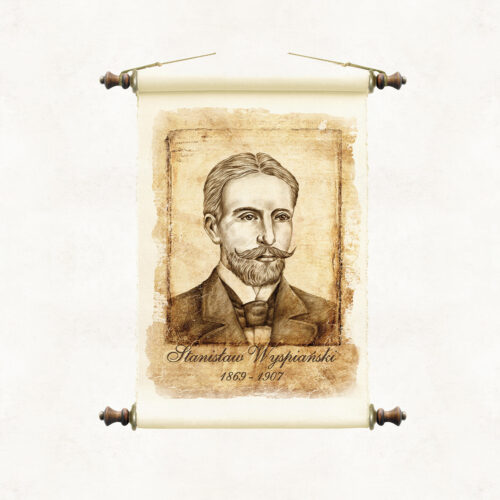-
Scroll with an image of Prince Casimir the Restorer, painted in watercolour by the artist of our publishing house, Marek Miha. The portrait is a colourful interpretation of drawings from the series Poczet królów i książąt polskich (A Selection of Polish Kings and Princes) made in pencil by Jan Matejko. KAZIMIERZ THE RENEWER (1016 - 1058) Casimir Charles I, more commonly known as the Restorer, ruled Poland from 1039 to 1058. He failed to take power after his father Mieszko II, was exiled, and the country descended into chaos. In 1039, the Restorer returned to the country and, with the help of the German Emperor and a Ruthenian prince, gradually regained power, rebuilt the country, recreated the ecclesiastical metropolis and made Krakow the new capital. However, he was no longer able to regain the royal crown.
-
MIESZKO I (922-992) The first historical ruler of the Polish lands, the actual creator of the Polish statehood. A skilful politician and a talented leader. He fought battles for Western Pomerania and wars with Bohemia, conquering Silesia and Lesser Poland. By being baptised in 966, he strengthened the state, putting it on a par with the Christian countries of Europe. He established a Polish bishopric in Gniezno, and initiated the construction of numerous fortified towns and churches.
-
The nutrition board "Champions of healthy eating and physical activity" is a verbal and graphic illustration of the principles of healthy eating. This is an innovative scheme that groups food products and presents them in the form of a sports podium with a very clear evaluative division. Unlike the popular food pyramid scheme, which is not very suggestive for young people, our original board presents the healthiest products in a fun and clear way in the first and subsequent places on the podium. Unhealthy or even harmful dishes were pointedly placed in the garbage. The graphic message is complemented by ten essential principles of healthy eating placed at the top of the publication.
-
The calendar contains an alchemical, medieval recipe for gold from the "Collection of recipes for various arts" - Schedule diversarum artium, Theophilus Presbyter (ca. 1070-1125). The schedule allows for a detailed familiarization and analysis of the techniques of artistic crafts in the Middle Ages. The work is divided into three volumes. The first volume contains information on techniques, production and use of materials for drawing and painting, the use of paint and ink, especially for book painting and wall painting. The second volume concerns stained glass and stained glass technique. The third volume is devoted to goldsmithing and it is there that the oh-so-"practical" recipe for gold is given.
-
CASIMIR THE GREAT (1310 – 1370) The last of the Piast dynasty, king of Poland from 1333. Due to his talented foreign policy and the small number of wars fought, he was called the "diplomatic king" and "he who found Poland wooden and left it brick", due to the construction of dozens of new cities and expansion or building several hundred new castles and fortresses. His reign actually consolidated the process of unification of Polish lands and led Poland out of political isolation in Europe, after nearly two centuries of division.
-
The prayer called Saint Patrick's Breastplate is one of the most interesting relics of early Christianity. This type of hymn of an apotropaic and exorcistic nature was widely used in Ireland and Scotland between the 5th and 12th centuries. The prayer is meant to act as a spiritual armor. A specific definition of the term comes from the 11th-century Liber Hymnorum: “It is a religious protection of body and soul against demons, men and vices. Any person who sings it to God with great concentration, every day, will not see demons. It will protect him from every poison and envy, he will be protected from sudden death, and it will be a shield for his soul after death.”
-
The board commemorates Saint. Stanisław of Szczepanów (also Stanisław Szczepanowski), bishop of Krakow, martyr, saint of the Catholic Church and one of the main patrons of Poland. The illumination placed on the board shows Saint. Stanisław as the patron saint of the Kingdom of Poland and comes from the work of Jan Długosz entitled Catalog of the Archbishops of Gniezno (Latin: Catalogus archiepiscoporum gnesnensium) from before 1476. The author of the painting is the Cistercian Stanisław Samoshootnik, a. Stanisław of Mogila (1480 - 541) - Polish painter, illuminator and miniaturist. The illustrations for the catalog were made several dozen years after Jan Długosz's death.
-
BOLESŁAW CHROBRY (967 - 1025) Son of Mieszko I, the first crowned king of Poland. He was an ally of Emperor Otto III, whom he hosted in Gniezno in 1000. He led victorious wars for Milsko and Lusatia. He organized missionary trips to Kyiv. He placed his son-in-law Svatopluk on the Russian throne and regained the Cherven Castles, previously occupied by Prince Vladimir of Kiev, annexing them to his state. Historians are increasingly adding the word "Great" to his name.
-
Fryderyk Franciszek Chopin (1810 - 1849) Fryderyk Chopin (French: Frédéric Chopin), Polonized form: Szopen (born February 22 or March 1, 1810 in Żelazowa Wola, died October 17, 1849 in Paris) - Polish composer and pianist. From October 1831 he lived in France. He is considered one of the greatest Romantic composers, as well as one of the most important Polish composers in history. He was one of the most famous pianists of his time, often called the poet of the piano. Elements characteristic of Chopin's works are in-depth expression and drawing on the stylistic patterns of Polish folk music.
-
MIESZKO (922–992) The first historical ruler of Polish lands, the actual creator of Polish statehood. An efficient politician and a talented leader. He fought for Western Pomerania and wars with the Czechs, conquering Silesia and Lesser Poland. By being baptized in 966, he strengthened the state, equaling it with the Christian countries of Europe. He established a Polish bishopric in Gniezno and initiated the construction of numerous defensive strongholds and churches.
-
STEFAN BATORY (1533 -1586) Son of Stefan, voivode of Transylvania, and Katarzyna Telegdi. From 1571, prince of Transylvania, and from 1576, second elective king of Poland. At great financial expense, he organized an army and conducted three victorious campaigns against Moscow (1579, 1580, 1581), capturing Polotsk, Velikiye Luki and besieging Pskov. The war with Russia ended with the truce in Jama Zapolski, strengthened the rule of the Polish-Lithuanian Commonwealth in Livonia and expanded the borders of Lithuania.
-
Scroll calendar - Władysław Bełza Władysław Bełza (born October 17, 1847 in Warsaw, died January 29, 1913 in Lviv) - Polish neo-romantic poet, writing in a patriotic spirit, called the eulogist of Polishness. Publicist, animator of cultural, educational and press life, co-founder of the Polish educational organization Macierz Polska. Author of, among others, the famous patriotic poem "Catechism of a Polish Child" which begins with the words Who are you? - Little Pole...

